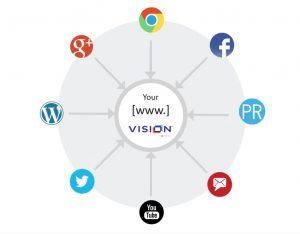Community engagement is top of mind for local government leaders this year as they work to match the highly personalized and powerful digital experiences created by companies like Amazon, Netflix and Uber. The opportunities to connect with citizens in new, more personal and immediate ways have never been greater and we’re well on our way to a “new normal” in civic engagement.
Local agencies’ increasing focus on citizen engagement is evident in the results of the latest “What’s Next in Digital Communications for Local Government” survey conducted by Vision in December 2017 to assess the current state of digital communications and project future trends. For the fourth year in a row, “expanding citizen engagement” was cited as a top priority of the nearly 370 municipal and county government officials questioned in the online survey. Sixty-nine percent of survey respondents rated their current level of citizen engagement as poor to average.
Moreover, nearly half (49 percent) cited “limited community engagement” as the biggest challenge for their websites in 2018.
But what communications channels are most effective for boosting citizen engagement?
According to the local government representatives who participated in this year’s survey, social media is the most effective channel for local government communications, taking the number one spot for the second year in a row. As one respondent put it, “social media is where citizen engagement happens.”
Getting ahead of the curve on social media, however, presents a unique challenge for organizations because platforms, best practices and user expectations shift so quickly. That’s why we put together the following five-step plan to developing a community engagement strategy.
- Define a strategy and set goals. Think about:
- What you’re trying to accomplish
- Whom you want to reach
- What you want them to know or do
- Why it’s important
Decide what content you can generate, who will generate it and how often you can post. Have set policies and procedures in place before you begin.
- Focus your efforts: Consider the digital habits of your audience. Where, why and how often are they spending time online? Are they using a mobile device? There’s no point launching an Instagram account if the vast majority of your audience doesn’t even know it exists, or sending text messages if most of your audience is not mobile. Start with one or two platforms and consider what channel is most appropriate for each message. Many of our clients begin with Facebook to discuss news and local issues, and use Twitter to get out more time-sensitive announcements and emergency information. Text messaging should be used sparingly and in only the most urgent situations, while many agencies find email is best for getting people to take action. If there is a platform you are considering for the future, go ahead and register your organization’s official name so you have it locked down when you are ready to proceed.
- Post regularly and closely monitor customer conversations: Get in the habit of tweeting three to five times per day and posting on Facebook about once a day. Keep your eyes on your own channels so you can respond quickly to questions and comments, correct misinformation, mitigate rumors and comment on breaking news. Also, monitor third-party channels, like Rant & Rave, NextDoor and others where residents discuss issues so you can respond when necessary.
- Evaluate your communications channels at least once a year: Channel effectiveness is constantly changing. Last month, for example, in an effort to combat fake news, Facebook announced that they are changing the algorithm that guides what users see on their news feeds to focus more on personal interactions instead of posts from businesses and public sector organizations. As the number of people who see content from government agencies declines, it is important to plan for other avenues of engagement like email, text and emerging social channels.
- Take a hub and spoke approach:
 Our research clearly indicates a preference for maintaining the agency website as the core communications vehicle. It’s the digital hub with all other channels functioning as spokes from that hub. Email, social posts, text messages and news releases all must direct users back to your website for more information, registration, etc. It’s the main channel of authority and accuracy, so it’s imperative that you keep website content up-to-date and in sync with all other channels of communications.
Our research clearly indicates a preference for maintaining the agency website as the core communications vehicle. It’s the digital hub with all other channels functioning as spokes from that hub. Email, social posts, text messages and news releases all must direct users back to your website for more information, registration, etc. It’s the main channel of authority and accuracy, so it’s imperative that you keep website content up-to-date and in sync with all other channels of communications.
So, what’s the secret to success when it comes to citizen engagement?
No digital enablement platform can be taken seriously without a serious Content Management System (CMS) at its core. It’s where content, communications, transparency, data, services and engagement come together. The right CMS can help you develop richer communications to facilitate an ongoing, two-way dialog with citizens that is both efficient and effective.
The good news is more than half of the local government leaders we surveyed plan to invest time and money in updating and improving their websites in 2018. These proactive agencies are poised to drive significant change in the way they interact with their communities.












